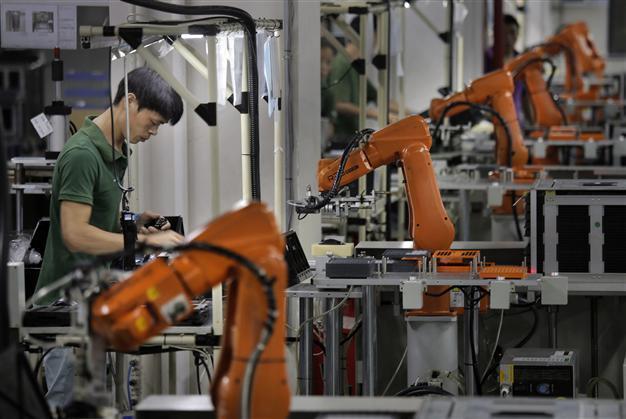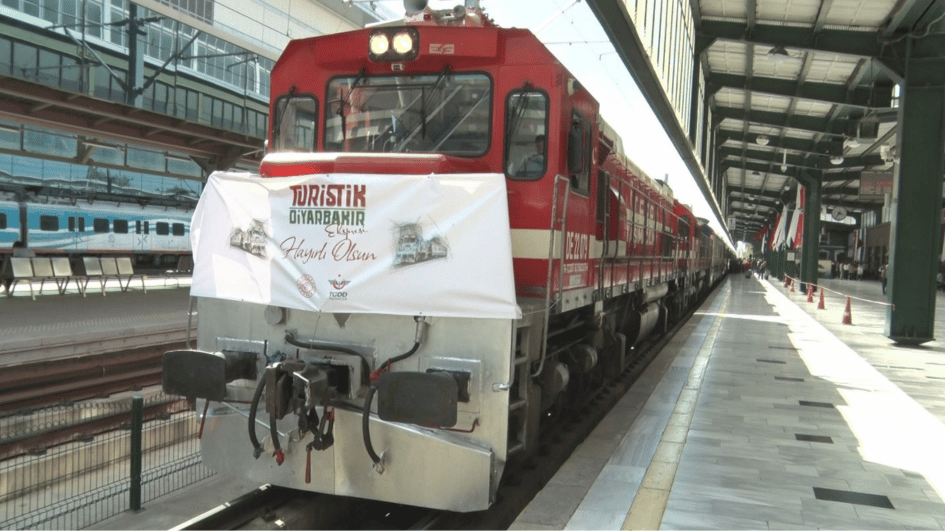China flash factory PMI unexpectedly falls to 6.5-year-low
BEIJING - Reuters

In this Aug. 21, 2015 photo, a Chinese man works amid orange robot arms at Rapoo Technology factory in southern Chinese industrial boomtown of Shenzhen. AP Photo
Activity in China’s factory sector unexpectedly shrank to a 6-1/2 year low in September, a private survey showed, raising fears of a sharper slowdown in the world’s second-largest economy that could spell more turmoil for financial markets.Global investors and policymakers are on edge over China after the U.S. central bank last week held off from raising interest rates, saying it was unsure if international problems and China’s slowdown in particular, will hurt the U.S. recovery.
The preliminary Caixin/Markit China Manufacturing Purchasing Managers’ Index (PMI) fell to 47 in September, the worst since March 2009 and below market expectations of 47.5 and August’s final 47.3. Levels below 50 signify a contraction.
China’s factory activity has now shrunk for seven months in a row, and the latest survey showed conditions in September deteriorated from August by almost every measure, with companies cutting output, prices and jobs at a faster pace as orders fell.
“The weaker-than-expected PMI suggested domestic and external demand remained sluggish. It’s almost certain China’s economic growth will slide below 7 percent in the second half of this year,” economists at Minsheng Securities said.
“To achieve the growth target, we expect the authorities to keep its loosening monetary policy stance with more measures on the fiscal front in coming months.”
Economists had expected the latest PMI to remain anemic but edge up slightly, as a slew of stimulus measures since last year slowly take effect and as many factories which had closed in August and early September began to reopen.
Most Asian stock markets extended early losses after the report while U.S. stock futures fell 1 percent. The Australian dollar also eased on fears the demand in the country’s biggest trading partner would fall.
It’s no secret that China’s economy has been gradually slowing from a breakneck double-digit pace in past decades, as Beijing tries to transform its growth model from a reliance on heavy manufacturing and exports to one with a more vibrant services sector and stronger domestic demand.
But persistently weak factory activity and cooling investment could spark fears that the downdraft is now too intense for services alone to offset, putting the economy at risk of a more profound cyclical and structural slowdown that could jeopardize the fragile global recovery.
Factory output sank to its lowest since the global financial crisis, and soft orders suggested more weakness ahead. New orders, a proxy for both domestic and overseas demand, fell to a near four-year low while export orders shrank at the fastest clip since mid-2013, highlighting weak global demand.
The weak PMI will reinforce views that Beijing will roll out more support soon, including further cuts in interest rates and bank reserve requirements and higher infrastructure spending.
















